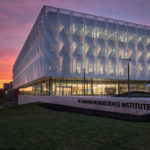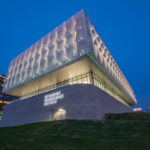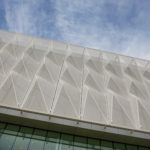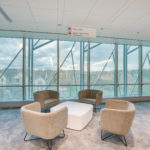Company:
Structurflex LLC Kansas City, MO
Project Details
Fabric 1
PVC Mesh
Producer:
Mehler Texnologies GmbH
Engineer Company 1
Structurflex llc
Design Name
Paul Snustead
Design Company
Structurflex llc
Architect Company
Perkins+Will
Fabrication Company
Structurflex llc
Subcontractor Company
Structurflex llc
Project Manager Company
Structurflex llc
Installation Company
Structurflex llc
Please describe the project specifications
We designed, engineered, fabricated and installed the most unique tensile fabric sun shading screen structure ever installed over an all glass curtain wall system in the USA.
What was the purpose of this project? What did the client request?
To ensure that the interiors would not become overheated or overly bright, and to create a signature look for the building exterior, we designed, engineered and fabricated a 30,000 sq ft PVDF PES facade that functions as a sunshade. The building makes use of the surrounding natural light to create a general feeling of wellness and calm as well as interior healing spaces for patients.
What is unique or complex about the project?
The complexity of the project was in how we needed to anchor this unique design to an all glass curtain wall. The steel framework stands off the facade and was integrated with the glass curtain wall system with a unique steel tabs that allowed for differential movement between floor levels. In addition we installed a series of custom undulated steel tubes to create unique shape and depth all the while to keep the structure as unobtrusive as possible. The fabric mesh is patterned to shape and affixed with aluminum framing system that is attached to the steel framework. The lightweight facade reduces solar heat gain and glare while also maintaining unobstructed views outside.
What were the results of the project?
After a change in the building design to increase the footprint by 33%, the overall project cost increased as well. By incorporating a lightweight PVDF PES fabric mesh instead of a metal mesh we were able to drastically reduce the weight of this system and the owner did not need to invest in expensive, high-performance window glazing. Another benefit is the fabric mesh provided a solar shade, thus reducing heat island effect by keeping the building cool in the summer. This ‘fabric jacket’ also helps keep the building warmer in the winter by shielding it against the extremely cold prevailing winds.
As proof this system worked, The University of Cincinnati was able to realize a huge cost savings that helped to offset the increased project cost. Lifecycle costs were reduced because the Tio2 coating on the facade prevents dirt accumulation and washes clean with rain, ongoing maintenance costs were also reduced.
Content is submitted by the participant. IFAI is not responsible for the content descriptions of the IAA award winners.
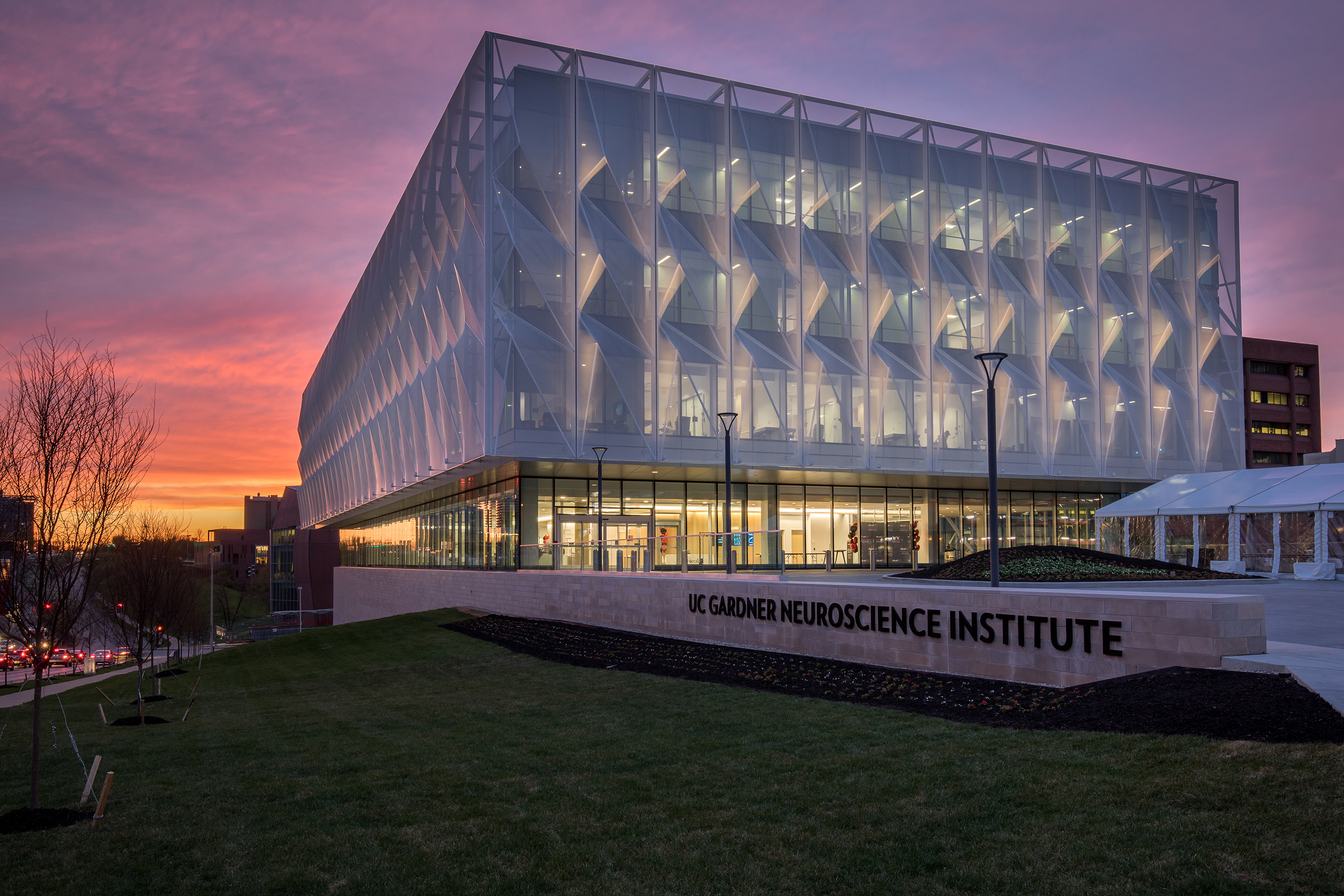
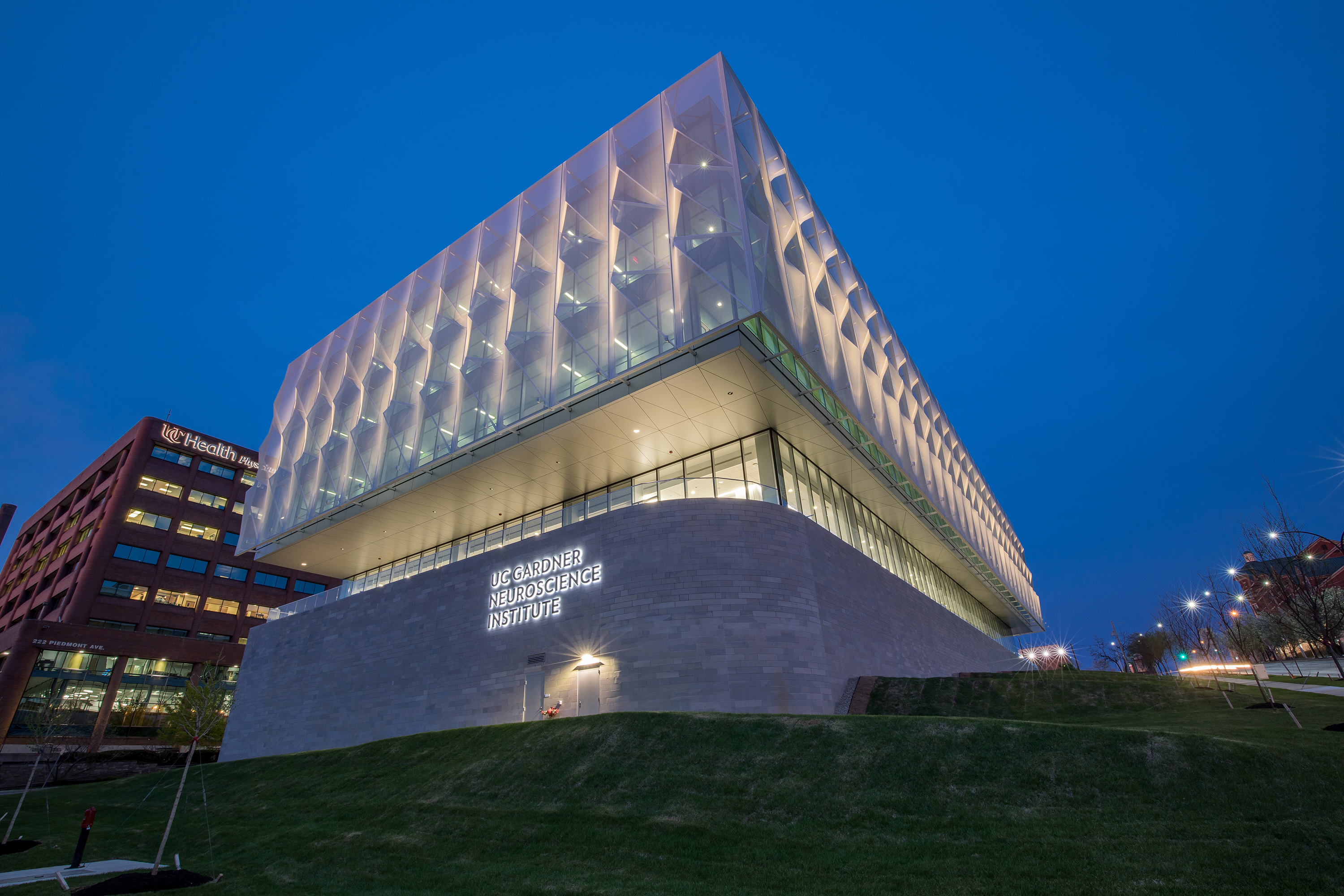
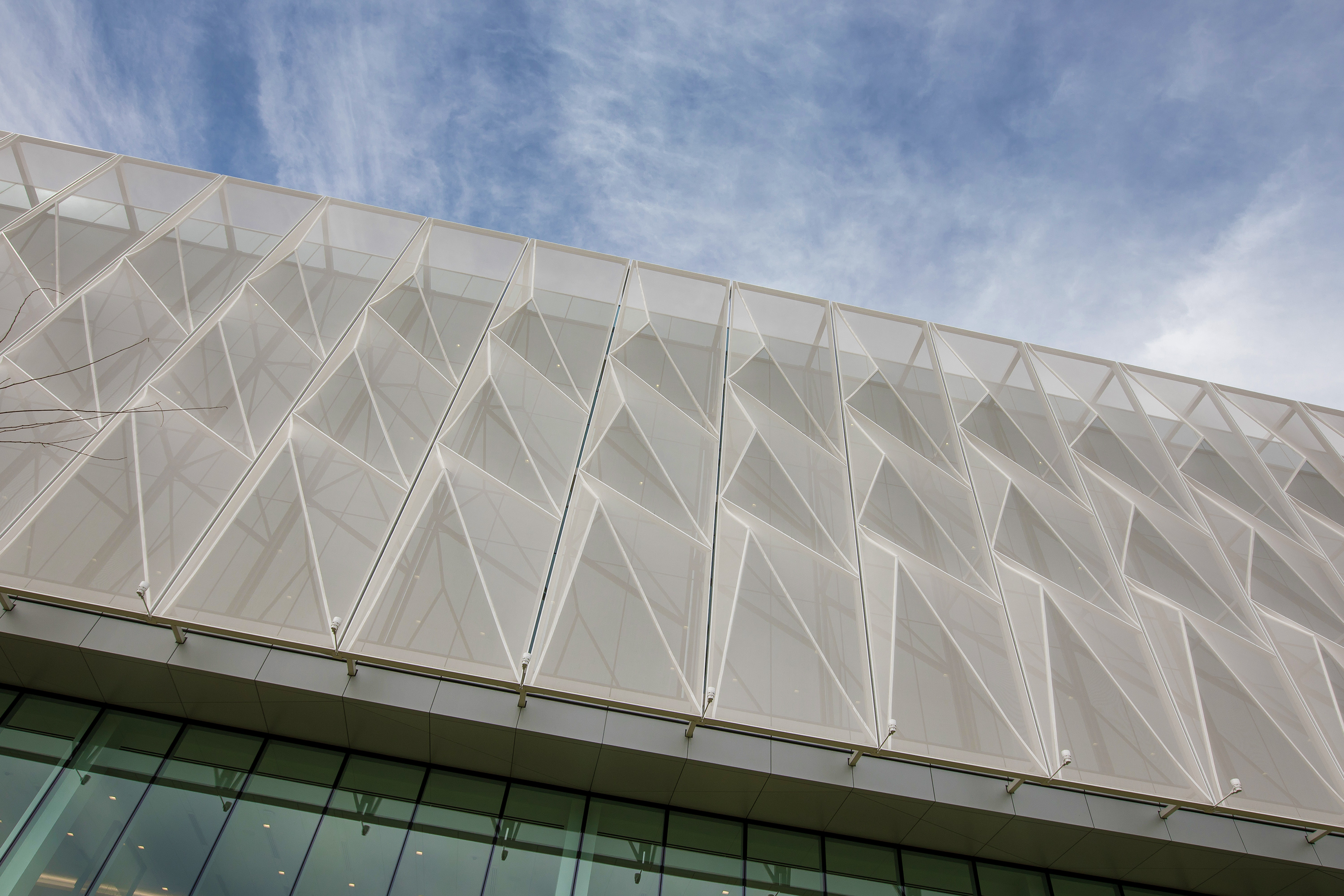
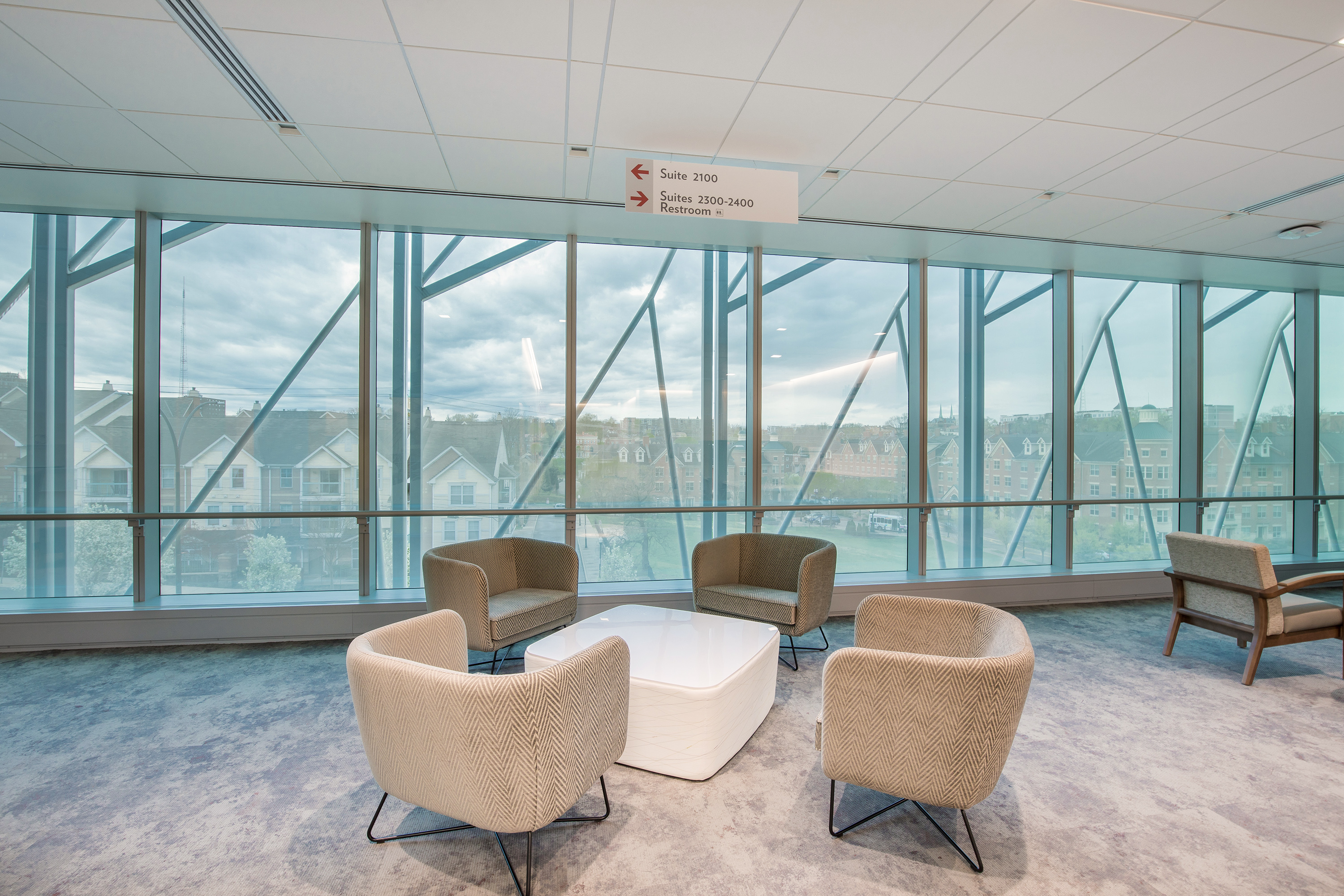
 TEXTILES.ORG
TEXTILES.ORG



